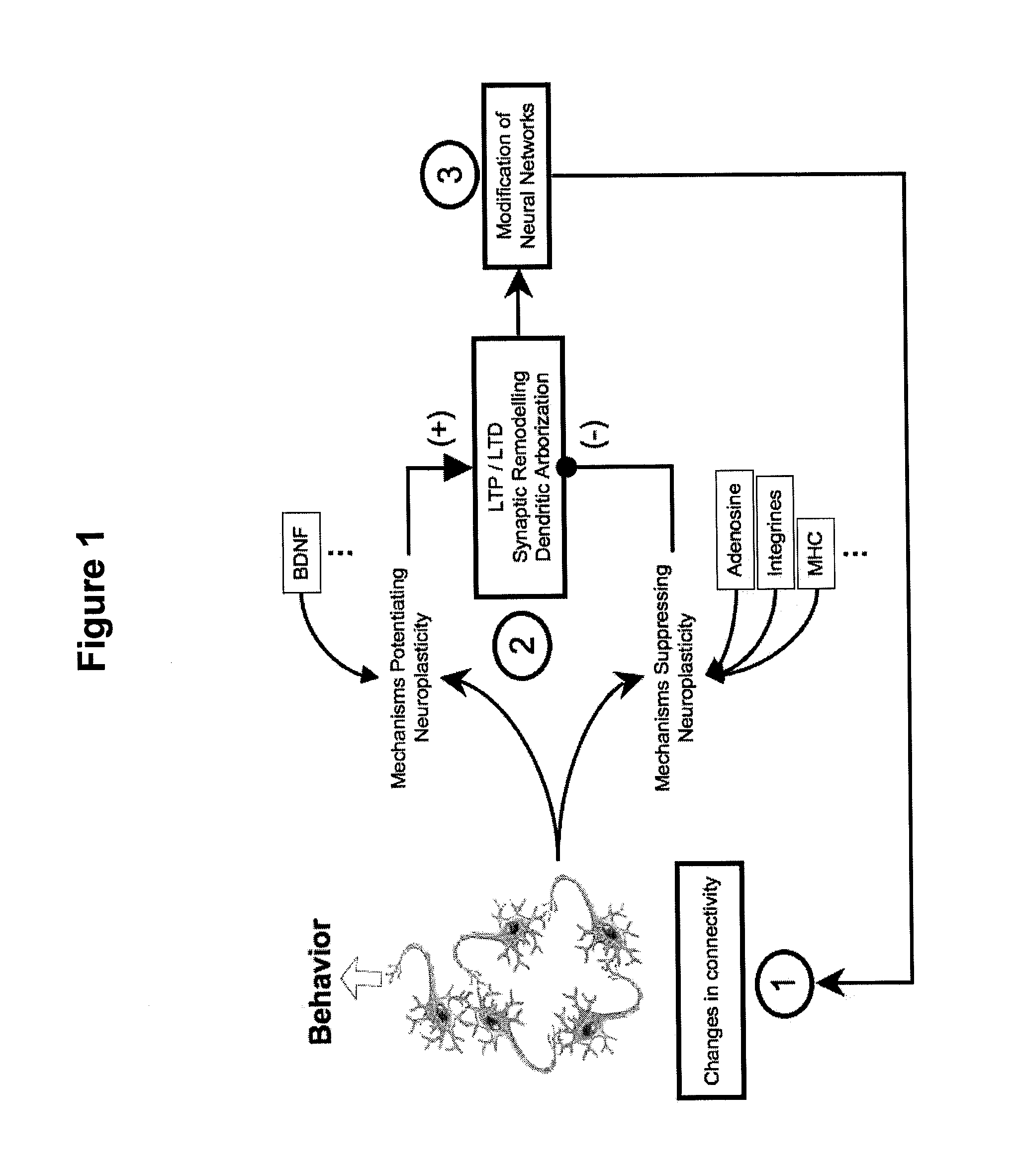Non-invasive methods for evaluating cortical plasticity impairments
a cortical plasticity and non-invasive technology, applied in the field of psychiatric disorders and neurological conditions, can solve the problems of affecting the effect of psychiatric disorders on affected individuals as well as society, lack of social and communicative skills, and repetitive and stereotyped behavior patterns, so as to achieve the effect of monitoring the therapeutic
- Summary
- Abstract
- Description
- Claims
- Application Information
AI Technical Summary
Benefits of technology
Problems solved by technology
Method used
Image
Examples
example
Neuroplasticitiy in Schizophrenia and Autism Spectrum Disorder Patients
[0103]Schizophrenia (SZ) and ASD are extremely disabling developmental neuropsychiatric disorders. To date, understandings about their underlying pathophysiology are rudimentary. Further, there is little reliable biomarkers that might aid diagnostically, inform the development of effective therapies, and predict treatment response in future clinical trials. It is suggested that plasticity mechanisms themselves are abnormal in individuals with ASD and ESZ. The brain is a dynamically adjusting, intrinsically plastic organ, and plasticity shapes the behavioral consequences of genetic, developmental and acquired brain alterations.
[0104]Aberrant plasticity mechanisms can compound the pathological consequences of a specific genetic mutation or sustained environmental insult, or even act on a genetically normal brain to induce a pathological state. Developmental and experience-based plasticity might be conceptualized as...
PUM
 Login to View More
Login to View More Abstract
Description
Claims
Application Information
 Login to View More
Login to View More - R&D
- Intellectual Property
- Life Sciences
- Materials
- Tech Scout
- Unparalleled Data Quality
- Higher Quality Content
- 60% Fewer Hallucinations
Browse by: Latest US Patents, China's latest patents, Technical Efficacy Thesaurus, Application Domain, Technology Topic, Popular Technical Reports.
© 2025 PatSnap. All rights reserved.Legal|Privacy policy|Modern Slavery Act Transparency Statement|Sitemap|About US| Contact US: help@patsnap.com



